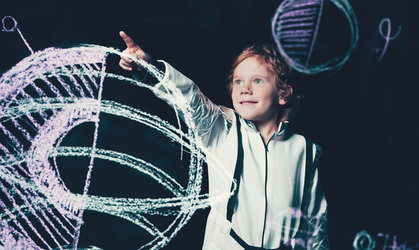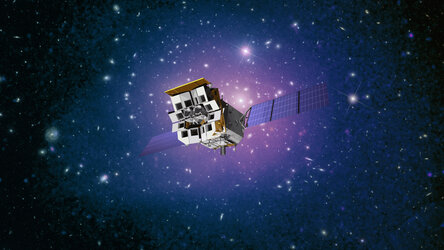About the Space Debris Office
Since the mid-1980s, ESA has been active in all research, technology and operational aspects related to space debris.
Agency expertise is mainly concentrated at the Space Debris Office located the European Space Operations Centre (ESOC), Darmstadt, Germany.
The team at ESOC has developed long-standing experience in the areas of:
- Radar and optical measurements and their simulation
- Development of space debris and meteoroid environment and risk assessment models
- Analysis of debris mitigation measures and their effectiveness for long-term environmental stability
- In-orbit collision risk assessments
- Re-entry safety analyses
- Space debris database issues
The Space Debris Office coordinates ESA's research activities on space debris, coordinates such activities with national research efforts and provides operational services.
The office also coordinates ESA's research activities in all major debris disciplines, including measurements, modelling, protection, and mitigation, and coordinates such activities with national research efforts with space agencies in Italy (ASI), the United Kingdom (UKSA), France (CNES) and Germany (DLR). Together with ESA, these national agencies form the European Network of Competences on Space Debris (SD NoC).
Contributing to ESA's Space Situational Awareness (SSA) programme

ESA's Space Debris Office has also been a forerunner in the definition of European space surveillance activities, which ESA is now exploring under its Space Situational Awareness (SSA) programme.
This programme is now it its third period (2017-2019) and the Space Debris Office is providing a management function for the Space Surveillance and Tracking (SST) segment.
In SST, the development of the technologies for detection, cataloguing and follow-up of space objects, and of the derived applications for conjunction event prediction, re-entry predictions, and fragmentation event detection, is considered a first important step toward a European SST capability.
ESA is focussing on research and development, supporting national initiatives, and ensuring complementarity with other European approaches to SST.
From on-going national SST activities in Europe, a demand for larger cross-national SST components and technology development is expected to ensure the interoperability of developed systems.
Examples of related planned ESA activities are space-based SST sensors, sensor and data-centre processing software facilitating data exchange mechanisms and common data-processing techniques and formats.
Through the SSA programme, ESA’s expertise will be exploited in supporting the research, development and coordination of space-related technologies in a multinational environment, and in assessing and further developing the relevant emerging technologies in close coordination with the appropriate technology domains.
CleanSpace
Since inception of the Agency’s Clean Space initiative, ESA’s Space Debris Office has been in active support by conducting research and system engineering studies. CleanSpace is organised around four distinct branches, of which two are closely linked to space debris:
- Eco-design
- Green technologies
- Space debris mitigation
- Technologies for space debris remediation.
Serving the Agency and third-party customers
ESA's Space Debris Office provides operational services in support of planned and on-going missions for ESA and for third parties.
These services comprise in-orbit collision avoidance (forecasts, risk assessment, processing of conjunction messages, prediction refinements and avoidance manoeuvre recommendations), re-entry prediction and risk assessment (prediction of re-entry time and location, forecast of spacecraft disintegration and demise and on-ground risk assessment) and maintenance of information on all trackable objects in the Database and Information System Characterising Objects in Space (DISCOS) database.
Technical excellence for space debris analyses
The Space Debris Office has developed and maintains several engineering tools for space debris analyses.
Engineering tools to support space debris analyses are provided by the Space Debris Office. These tools, which are available as ready-to-use, self-standing and self-installing software products, include:
- MASTER (Meteoroid and Space Debris Terrestrial Environment ) model for the prediction of debris and meteoroid particle fluxes
- PROOF (Program for Radar and Optical Observation Forecasts) tool for planning and simulation of radar and optical observations on ground or in space
- DRAMA (Debris Risk Assessment and Mitigation Analysis) for the verification of the compliance of space missions with mitigation guidelines
These tools are used by industry and academia worldwide.
Global cooperation and information exchange
Since 1984, ESA has organised or co-sponsored numerous international conferences dealing with space debris. These include the quadrennial series of European Conferences on Space Debris, Committee on Space Research (COSPAR) conferences, International Astronautical Congresses (IAC) and International Association for the Advancement of Space Safety (IAASS) conferences.
Contact
Holger Krag
Head of ESA Space Debris Office
ESA/ESOC
Robert-Bosch-Str. 5
64293 Darmstadt, Germany
Tel: +49-6151-90-2280















 Germany
Germany
 Austria
Austria
 Belgium
Belgium
 Denmark
Denmark
 Spain
Spain
 Estonia
Estonia
 Finland
Finland
 France
France
 Greece
Greece
 Hungary
Hungary
 Ireland
Ireland
 Italy
Italy
 Luxembourg
Luxembourg
 Norway
Norway
 The Netherlands
The Netherlands
 Poland
Poland
 Portugal
Portugal
 Czechia
Czechia
 Romania
Romania
 United Kingdom
United Kingdom
 Slovenia
Slovenia
 Sweden
Sweden
 Switzerland
Switzerland


























